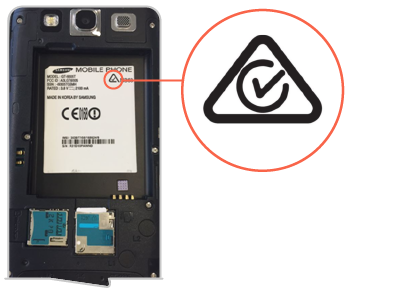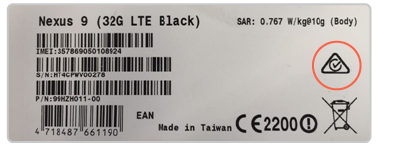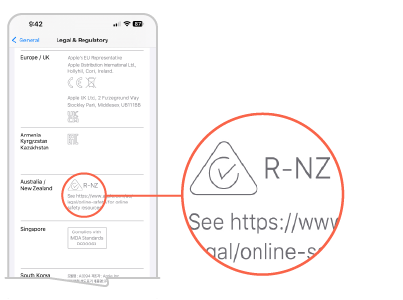Mobile phones and health
What do we know?
We rely on the expert advice of a number of national and international health authorities, including the Australian Radiation Protection and Nuclear Safety Agency (ARPANSA) and the World Health Organisation (WHO) for overall assessments relating to health and safety. Research into electromagnetic energy (EME), mobile phones and health has been going on for many years.
The current advice on mobile phone safety from ARPANSA is:
'There is no established scientific evidence that the use of mobile phones causes any health effects. However, for those concerned about health effects, ARPANSA provides advice on how to minimise exposure. This advice can also be applied where parents wish to minimise their children's exposure to mobile phones.'
Mobile phones and cancer – WHO finds no link between mobile phone use and brain cancer
In September 2024, the WHO published the latest research into mobile phones and cancer. A summary of the research findings is published on the ARPANSA website saying:
'A World Health Organization commissioned systematic review into the potential health effects from radio wave exposure finds no association between mobile phone use and head cancers.
The Australian Radiation Protection and Nuclear Safety Agency's (ARPANSA) A/Prof Ken Karipidis, who led this review, says that it is the most comprehensive and up-to-date assessment of the evidence to date.
The findings of this systematic review align with previous research conducted by ARPANSA showing that, although the use of wireless technology has massively increased in the last 20 years, there has been no rise in the incidence of brain cancers.'
Source: ARPANSA website – WHO review finds no link between mobile phone use and brain cancer
The full research summary and links to the research journal publication are available on the ARPANSA website.
Get more information
We are committed to providing you with any further updates from ARPANSA and the WHO as they become available.
We take all matters of safety very seriously and only sell mobile phones that meet national and international safety requirements and standards.
If you have further questions, you can email us at eme.enquiries@team.telstra.com.
The Australian Radiation Protection and Nuclear Safety Agency (ARPANSA) sets the EME safety standard for mobile phones. It is the role of the Australian Communications and Media Authority (ACMA), the Federal Government regulator for the telecommunications industry, to regulate communications equipment and devices that emit EME.
The ACMA created the Radiocommunications Equipment (General) Rules 2021, which requires all mobile phones sold in Australia to comply with the EME safety standard.
The EME safety standard operates by limiting the Specific Absorption Rate (SAR), or the rate at which the mobile phone user absorbs energy from the handset. The SAR is measured in watts per kilogram (W/Kg), and in Australia the maximum SAR allowable for any mobile phone is 2 watts per kilogram (averaged over 10 grams).
All mobile phones and devices sold in Australia must display the ACMA's compliance label known as the Regulatory Compliance Mark (RCM). This mark confirms that your mobile phone or device complies with the EME safety standard.
You should make sure, when buying a new mobile phone or device, that it has the RCM. It is usually found behind the battery or on the box or packaging of your mobile phone or device (or electronically in device settings).
Examples of where to find the Regulatory Compliance Mark

Example of the A-Tick (the predecessor to the RCM) located on the product information label underneath the battery of a mobile phone.

Example of the RCM located on the product label on the box of a tablet.

Example of the Australia/New Zealand RCM found electronically on an iPhone under 'Legal & Regulatory' in the 'Settings' menu.
Further information on the regulatory compliance requirements is available from the Australian Communication and Media Authority (ACMA).
From October 2001, mobile phone manufacturers began providing SAR values and SAR information with all new release mobile phone models. This followed the development of a methodology to test mobile phones for their SAR level, introduced by the European Committee for Electrotechnical Standardisation (CENELEC), which allows for consistent reporting of SAR values worldwide.
We support the mobile phone manufacturer's initiative to provide information on mobile phone exposure levels.
The maximum stated SAR level of a mobile phone is a maximum. This level does not represent an accurate indication of every day exposure because operational power levels vary considerably during normal use.
The variations in the maximum SAR measurements between the different models of mobile phones should not be seen as a measure of differences in safety. Although mobile phones sold in Australia may vary slightly in their measured exposure levels at maximum power output, they are regarded as equally safe because they all comply with the EME safety standard.
For additional information please visit the AMTA SAR information page.
There are many ways to find SAR information for mobile phones. We have listed some easy tips below.
- Check the phone handbook or user manual - look under safety or specifications.
- Search the manufacturer's web site for your phone model and SAR - it is usually listed under safety, or product specifications.
- Check the Mobile Manufacturers Forum web site.
- Use a web search engine like Google to search for your phone model and SAR.
- Contact the manufacturer and ask for the SAR information.
- Check the Telstra.com web site – look under the specifications tab for your mobile device.
- Email us at: eme.enquiries@team.telstra.com
While the maximum SAR values provide an indication of the highest power level that a mobile phone is capable of, mobile phones are designed to operate at the minimum power necessary to connect and maintain a quality call, and so they regularly operate at levels well below the maximum SAR.
In fact, both mobile phones and mobile base stations are designed to operate at the lowest possible power. The minimum power level required depends on a variety of factors, such as, the specific network, the user's proximity to base stations and the radio frequency band being used.
Once a call has been established, the base station and the mobile handset reduce their power automatically to the lowest level required to maintain a signal connection. This is referred to as adaptive power control.
One of the key factors affecting the operating power of a mobile phone is the user's distance to the nearest network base station. A mobile phone that is close to a base station will usually require less power to operate than the same mobile phone that is transmitting a call from further away.
If base stations are placed closer to users, the power levels required for communications usually decreases, and so too does the EME from base stations and mobile phones. This is why the location of a base station relative to the mobile phone users is important.
Rather get in touch? Let's get you connected
Online help & support
Find answers to your frequently asked questions.
Sign in to the My Telstra app
View your services, pay your bill, troubleshoot tech issues, contact us via chat and much more.
Multilingual support
Speak with us in your preferred language. We've got you covered.
Reach out to us
We're here to answer your questions.